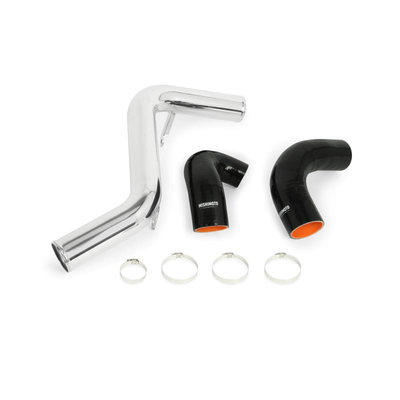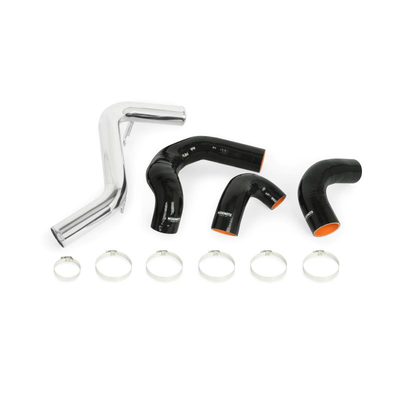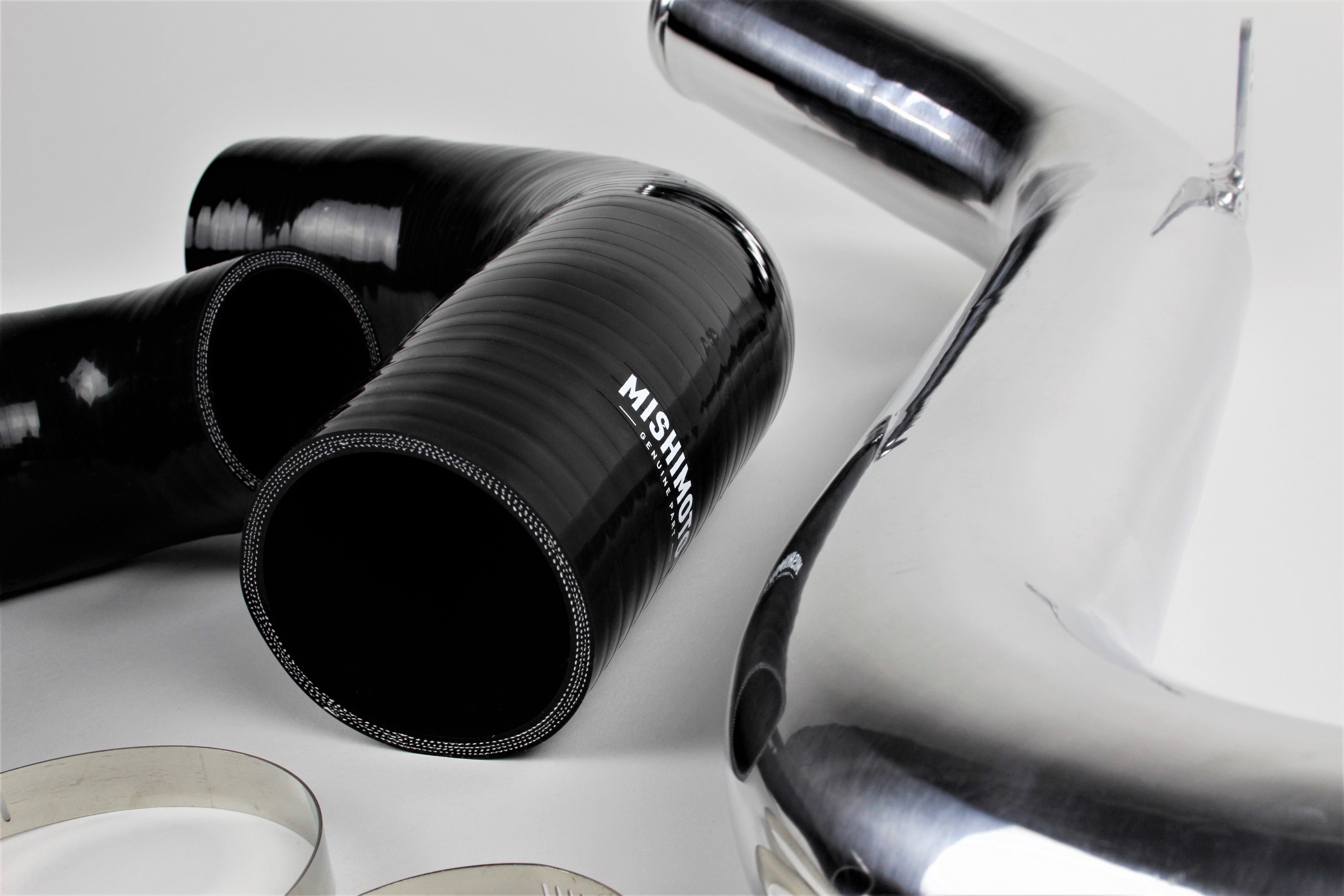
Completing the Package - Intercooler Piping R&D: Coming in Hot
Fresh off the assembly line comes our prototype intercooler pipes for the 2013+ Ford Focus ST. In the last update, I reviewed the stock piping, our 3D printed prototypes, and mildly teased what the final version of this kit will look like, so it's time for a full reveal. Let's go through some of the design features and performance numbers that have resulted from this project.
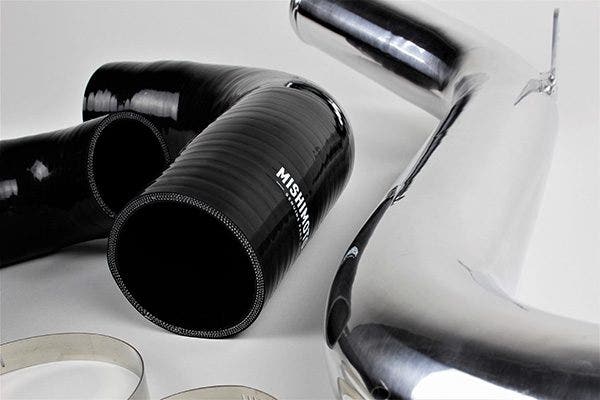
Hot-side intercooler pipes
The hot-side kit will have a solid aluminum center section with silicone couplers attached to the turbo and intercooler outlet. It fits nicely around the engine oil pan and is mounted with brackets to keep it in place. However, a balance between flexibility and rigidity is important, which is why the couplers are long. This is what helps make the fitment accurate and absorb engine movement.

Piping leading to the turbocharger
While the piping diameter has been bumped to 2.5 inches, they still attach to the factory intercooler, so you can still enjoy the benefits if you are not running our performance intercooler. Speaking of benefits, fitment and great looking charge pipes were not the only ones. We have documented performance gains that also resulted from this design, starting with pressure drop.

Flow bench test results
Pressure drop happens when you lessen airflow restriction through the medium in which it travels. In this case that medium is an aluminum charge pipe. By making the overall diameter larger, more air can be brought in. As seen in the graph above, we increased overall flow by an impressive 26%. This will improve the overall efficiency and volume of air flowing from the hot side of the system. Let's now go to the cold side.

Cold-side intercooler pipe
The cold side has some awesome design features that our engineer decided to include. First, notice the odd, flattened, oval-like shape in the middle of the tube. That is no accident. Our engineer formed the tube in this fashion so it can clear the radiator and air conditioning condenser. The image below shows the spacing around our design. It's also worth noting that this part was installed on an ST that had our Performance Radiator, which is why the clearance looks tight here. There will be more clearance with the stock radiator.

Cold-side tube nestled right next to the A/C compressor
The internal structure is what helps the cold-side pipe keep its shape. The entire piece is made of wire-reinforced, five-ply silicone, keeping that balance between rigidity and flexibility we're aiming for with this kit. Holding this tube in my hand, it isn't easy to apply pressure to cause it to misshape. This means that under vacuum, there won't be any structural degradation or misshaping, which keeps the airflow constant. We wanted to show this to you, but don't really have any X-ray equipment. Time to get creative!
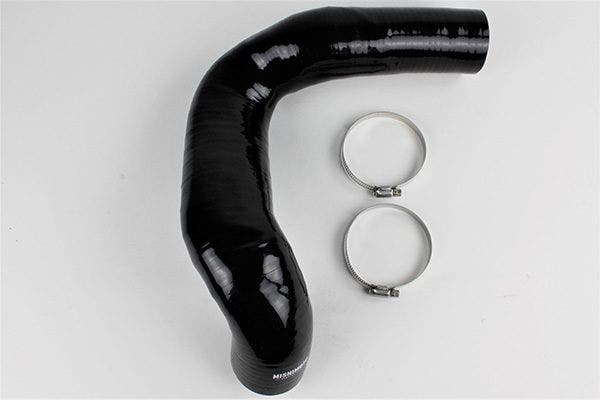
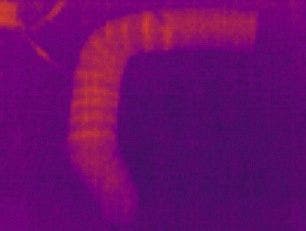
Above is what the product looks like with an electrical current running through it. In order to highlight the wire reinforcement, we took a picture with our thermal camera (just like we do with some of our dyno runs) as the wire would retain heat. Voila! An X-ray of the cold-side pipe has been taken without the use of an X-ray machine. Talk about innovation.

Cold-side pipe flow bench testing
We still had to see if it would outperform the factory cold-side piping. Our engineer performed the same pressure drop test on the cold side and came up with a 40% increase in overall airflow. The stock charge pipe has a similar shape, but the overall volume is more restrictive, which is why our improvement on pressure drop is so significant.

Entire intercooler pipe kit flow bench test
We also tested the kit for a more comprehensive understanding of how our design worked with the car. With both pipes on our flow bench, we saw a 21% overall increase in the system. Don't be alarmed by the number being smaller than the individual hot and cold sides. A pressure test like this isn't compounded, so you cannot simply add the two values together to see what the entire system will do. You must account for a change in flow characteristics when recording the results of the pipes working together, and this will change what the resulting values look like.
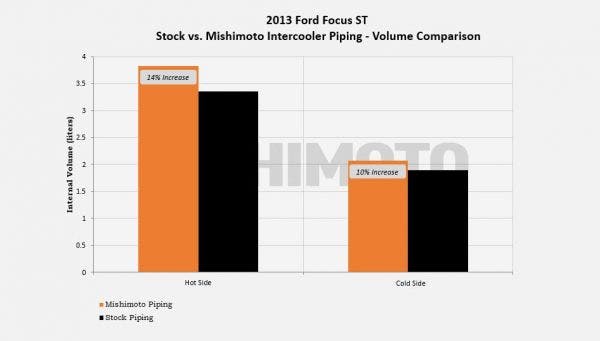
I mentioned that both sides have increased internal volume. The hot side had an increase of 14% while the cold side had an increase of 10%. While those numbers may not seem staggering, it's still this bump in volume that is improving airflow. A simple comparison shows how much of a choke point the factory pipes are on this application.
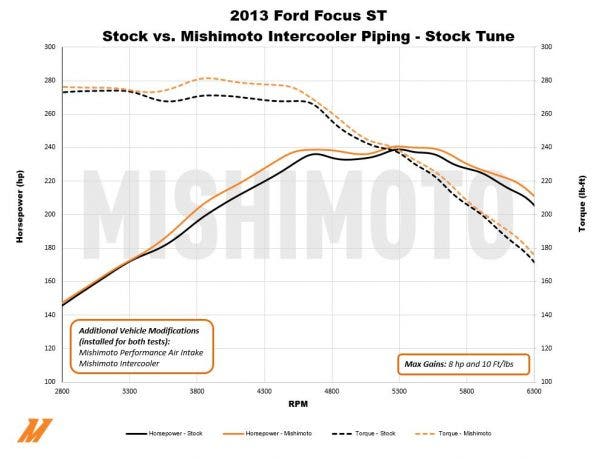
With both the hot and cold-side kits installed on the car (as well as our intake and prototype intercooler), we had dyno results that put the kit 8hp and 10 ft-lbs of torque over the factory setup on a stock tune. These pipes help open up the airflow delivery for this car, and we want you to reap the benefits. Our positive results put an end to our R&D for this project. The presale will begin soon, so stay tuned!
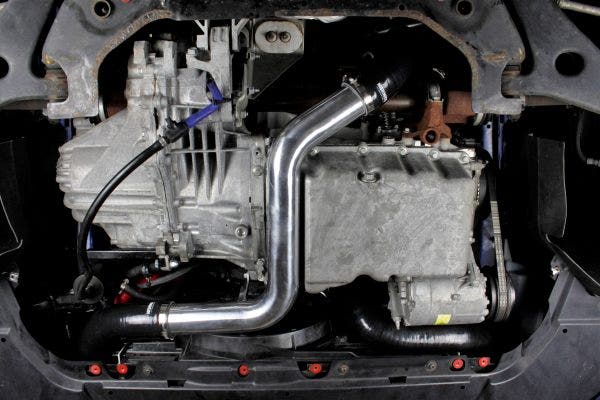
-Diamaan





